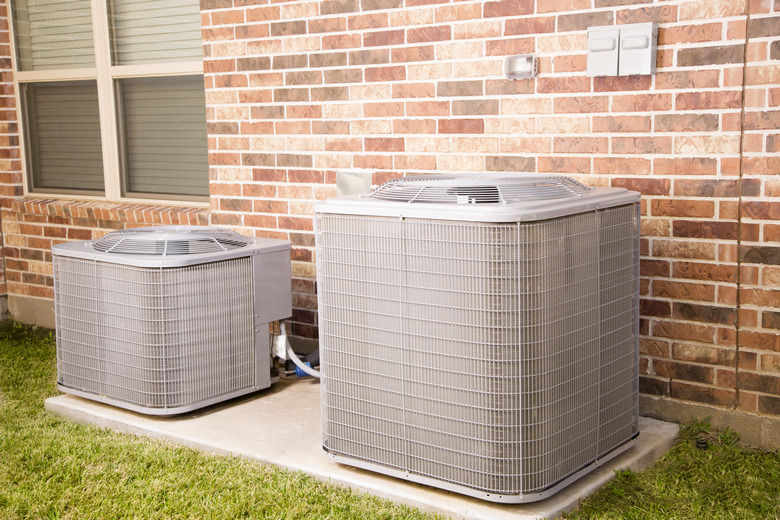How Much Water Should Drain From A Central Air Conditioner?
We may receive a commission on purchases made from links.
Central air conditioning cools the air and removes humidity from your home, making it a comfortable space during the dog days of summer. The amount of water that drains from a central air conditioner may be as much as 20 gallons daily depending on how long the unit runs and how much moisture is in the air. When the air conditioner is running, you should see water dripping from the drain line outside.
Tip
The amount of water produced when your air conditioner is running varies depending on the humidity in the air. A central air conditioner may remove up to 20 gallons of water daily from the air in your home.
Humidity and Central Air Conditioners
Humidity and Central Air Conditioners
Humidity is the moisture, or water vapor, in the air. In the desert, it is usually minimal, and some homes use a more economical method of cooling — the evaporative cooler — which puts moisture into the air via fans and water trickling over pads. However, in homes built near bodies of water, the humidity may rise up to 80 or 90 percent on hot days. The high humidity makes it hard for sweat to evaporate and cool your body.
A central air conditioning system pulls warm air over refrigerant-filled evaporator coils. This cools and dries the air, producing the cool air that blows out of your vents and a constant drip of water that condenses on the cold evaporator coils. The product of condensation, water, falls into an overflow drip pan, which drains outside via a drain line.
In extremely humid climates, central air conditioning may not lower the humidity level to a comfortable 40 to 50 percent in your home. You may need to add a dehumidifier as well, especially in large rooms and moist basements.
Water Drains Outside, Not Inside
Water Drains Outside, Not Inside
The condensed water drains outside, not inside. If you see water under the air conditioner, the drain line may be blocked. Before performing maintenance or cleaning around the air conditioner, turn off the unit and then turn off the power at the breaker box.
First, check the overflow drain pan. It may be clogged with dust and debris. Remove any visible clogs, wipe the pan with a rag, and see if it begins draining. If it does, add a cup of chlorine bleach or household vinegar to the pan monthly to prevent algae from growing inside the pipe.
If the drain line is still clogged, use a wet/dry shop vacuum or a condensate drain line pump. Attach the vacuum or pump hose to the outside drain line and suck out any debris and algae from the pipe. Once the drain line is clear, remove the hose and flush the drain line with a gallon or two of water to rinse out any remaining debris before restoring power at the breaker box.
Air Conditioner Water Uses
Air Conditioner Water Uses
The water that drains from your air conditioner is basically distilled water, though it may have algae or bacterial contamination from the drain pan and line. It is not safe to drink. If you treat the drain line with chlorine bleach, dilute or discard the initial flush of water to avoid damaging your plants or adding chlorine to your garden pond. Otherwise, treat the condensate like gray water.
If you're using the condensed water to water your garden, consider using a filter or a condensation pan treatment to remove bacteria and other contaminates. Once filtered and/or disinfected, you can use this otherwise wasted water in a drip-watering system to water your vegetables, flowers, or lawn. You can also collect the nonchlorinated condensed water to top off your garden pond.
